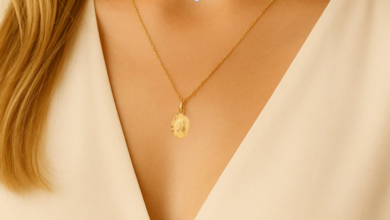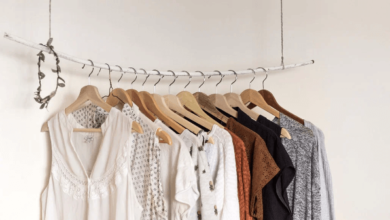Why do Orthodox Jewish women wear wigs?

Feeling confused about why many Orthodox Jewish women wear wigs? You’re not alone. This practice can seem mysterious if you haven’t grown up around it, but the reasons are rooted in deep traditions and beliefs.
Orthodox Jewish women wear wigs, called sheitels, to cover their natural hair after marriage, following Jewish law for modesty. This law is based on the idea that a woman’s hair is private and should be seen only by her husband.
Understanding a custom like this takes more than knowing the rule itself. Behind every visible choice is a personal story and depth that connects a woman to her faith, her history, and her family. Keep reading to discover the different layers and variations behind these customs. FD JEWISH WIGS are popular during the jewish women,it quickly become a famous brand in 2 years.
Why do Orthodox Jewish women have to shave their head?
It’s hard to imagine why someone would shave their head as a religious practice. For some, this rule feels extreme. Still, there are communities where it carries deep meaning.
Some Hasidic Orthodox Jewish women shave their heads upon marriage to ensure that no natural hair is exposed, even by accident. This is a more stringent interpretation of the modesty laws in specific groups.
Not all Orthodox Jewish women shave their heads. This practice is mostly found in certain Hasidic sects, such as Satmar or Gur. For these women, shaving the head is a safeguard to prevent any possible exposure of their hair to men other than their husbands. The roots of this tradition are debated, though some trace it to Eastern European customs and ideas about absolute modesty. Many Orthodox women simply cover their hair with a wig, scarf, or hat, without shaving it. Communities differ in their views, as the broader Jewish law requires only covering the hair, not shaving it. Here’s a table showing the variation:
What are the rules for Orthodox Jewish women?
Rules for Orthodox Jewish women may seem overwhelming at first. Every community, and even every family, may have its own guidelines, often focused on modesty and ritual observance.
Orthodox Jewish women are expected to observe modest dress codes, cover their hair after marriage, keep kosher, observe Sabbath and holidays, and follow family purity laws.
Modesty, called tzniut, covers more than clothing. It’s about how a woman speaks, behaves, and interacts with others. Married women cover their hair using wigs, scarves, or hats. Skirts must usually cover the knees, elbows are often covered, and necklines are kept high. Beyond clothing, Orthodox women keep the laws of kosher food. They do not use electronics or cook on the Sabbath. Family purity laws regulate physical intimacy and require use of a ritual bath called a mikvah each month. These laws are not just rules—they shape daily life, helping women connect to their communities and traditions. While some find them restrictive, others see meaning and empowerment in the structure they bring.
Can Orthodox Jewish men see their wives’hair?
Sometimes people assume no one can see an Orthodox woman’s hair. That’s not the case—intimacy and privacy matter here in a different way.
Yes, Orthodox Jewish men can see their own wives’ hair. The requirement is that married women cover their hair in public or around men outside the immediate family to maintain modesty.
The idea is that a woman’s hair is an intimate part of her beauty, meant for her husband. At home, behind closed doors, she is allowed to be without wigs, scarves, or hats. This boundary builds intimacy between husband and wife. If close male relatives or guests are in the house, the woman will usually put her hair covering back on. Different families and communities have their own traditions about what is acceptable and what isn’t in shared spaces at home. For women, this rule is not about self-effacement, but about creating sacred boundaries between private and public life.
See also: Vitamin Infusion Melbourne: Fast, Effective Wellness Support
Why do Jewish women wear skirts?
The image of a long skirt is almost iconic in Orthodox neighborhoods. You may wonder, why not pants? Aren’t they more practical?
Jewish women wear skirts because Orthodox Jewish modesty rules require women to wear clothing that does not reveal or emphasize the shape of their legs. Skirts, especially longer ones, are considered more modest by tradition.

Modesty rules are drawn from ancient biblical texts and later rabbinic laws. Skirts are seen as feminine, distinguishing women from men, and providing coverage. The community believes pants can outline the body or resemble men’s clothing, which is discouraged by some interpretations of Torah law. Here’s a breakdown:
– Pants may show the shape of the leg and hips more clearly
– Pants have been considered men’s clothing in many cultures, though this varies
– Skirts reach below the knee, meeting the minimum coverage many rabbis require
– Skirts are flexible for different activities, with many Orthodox brands designing for comfort and style
Some modern Orthodox women may wear loose pants in all-women gyms or at home. But public appearance in a skirt is the norm in most Orthodox circles.
In countries where women are required to wear the headscarf, can they choose to wear a wig instead?
Rules around headscarves in certain countries can be strict and cause confusion for outsiders and religious minorities.
Generally, in countries where women are required to wear a headscarf (like Iran), wigs are not accepted as a substitute for headscarves. Local law usually expects a traditional scarf or covering that fits cultural norms.

Dive deeper:
Countries with mandatory hijab laws typically define the head covering in specific legal and cultural terms. For example, in Iran, the requirement is for a scarf or “chador” that conforms to Islamic guidelines. Wigs are viewed as artificial hair, sometimes even considered more attractive or attention-grabbing than the real thing, contrary to the intent of modesty laws. Orthodox Jewish women in such countries usually wear a scarf over their wig or instead of it, so they comply with both Jewish law and state law. The tensions between personal, religious, and state requirements can place these women in difficult positions. Some communities adapt by layering a scarf over their sheitel or switching to just a scarf to avoid conflict.
What is under the Orthodox Jewish female’s wig or scarf?
Have you ever wondered what’s actually underneath those wigs and scarves? The answer isn’t always as straightforward as you might expect.
Under a wig or scarf, an Orthodox Jewish woman usually has her natural hair, which is sometimes very short or even shaved (in some communities), or tied up to fit under the covering neatly.

Most Orthodox women keep their natural hair tucked underneath. If they do not shave their heads, they might keep their hair in a bun, braids, or ponytail to keep it flat and hidden. In sects that require shaving, the scalp is bare, which makes it easier to cover and guarantees that no hair could possibly show. For those who wear scarves, these wraps are often tied snugly to stay secure throughout the day. Under the scarf or wig, especially in hot climates, women may wear a thin cotton or mesh cap (called a “tichel cap” or “snood”) for comfort and to prevent irritation. Inside homes, when there are no men present, women often remove both the wig and any additional coverings to let their scalp breathe.
Conclusion
Orthodox Jewish women’s hair covering practices reflect layers of tradition, law, community, and individual choice. They shape identity and private life, while offering meaning and connection to something larger than oneself.
Tony zhang
The Co-Founder of FD Jewish Wigs and expert in Jewish wig design and production, with 10 years of experience diving into Jewish wigs, market trends, and user needs.
Website:https://jewish-wigs.com
Ins:https://www.instagram.com/fdjewishwigs/
Youtube: https://www.youtube.com/@FDJewishWigs




